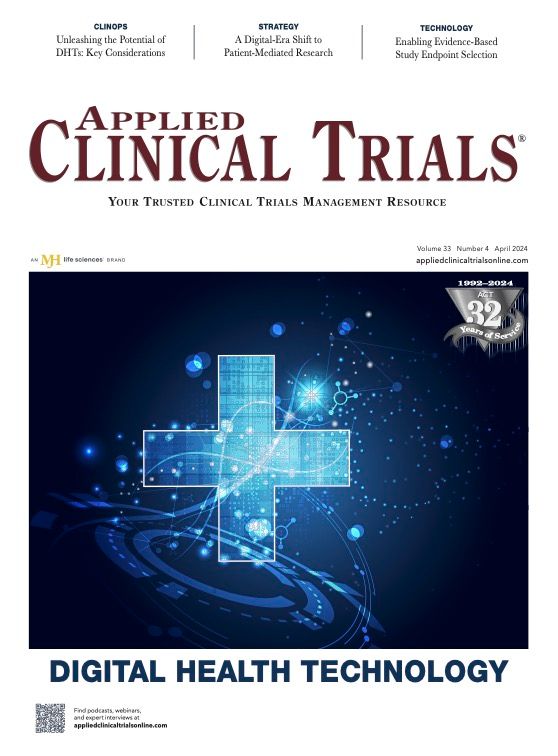Battling ‘Sludge’ in Clinical Trials: A Call to Action
The concept of sludge provides an invaluable lens for clinical research professionals in identifying and mitigating unnecessary friction and bottlenecks.
Chief Learning Officer and Co-Founder at ArcheMedX, Inc.

In contemporary clinical trials, balancing the competing goals of scientific rigor, staff and site efficiency, and patient experience is often overwhelming. The increasing complexity of trial protocols, combined with the pressures to deliver timely results across expanding endpoints, presents a wildly entangled challenge. This is the Iron Triangle of Clinical Trial Complexity.
The concept of “sludge,” as introduced by Cass Sunstein, provides an invaluable lens through which we might reexamine and optimize this balancing act. Sludge refers to the excessive requirements, red tape, and unnecessary friction that individuals and teams encounter in various processes. Sunstein’s exploration of sludge aims to highlight the ways in which it can impede decisions, actions, and access to benefits or services, effectively acting as a barrier to efficient and beneficial outcomes. Sunstein suggests that implementing “sludge audits and sludge-busting” techniques can rapidly release these bottlenecks and barriers, and speed necessary behavior change.
Understanding sludge in clinical trials
In the world of clinical trials, sludge is every- where. Researchers struggle with complicated documentation and expectations (real and perceived) that rarely add value. Site staff need to execute overly complex and often unnecessary procedures. And patients are confronted with daunting paperwork filled with medical jargon, confusing information about the trial, and/or the challenge of getting to and from trial sites. This is sludge.
Two of the most common, real-world examples of sludge are modern informed consent processes and archaic site training and start-up expectations.
For patients, informed consent forms have become increasingly lengthy and complex, and filled with procedural explanations often unintelligible to the layperson. This complexity creates uncertainty, undermines psychological safety, and deters potential clinical trial participants, particularly those with lower literacy levels or limited health knowledge. This is sludge.
For sites and staff, while training in preparation for clinical study execution is critical, archaic approaches of full-day, one-size-fits-all, wholly passive, death-by-PowerPoint are both demoralizing and ineffective. This is sludge.
Sludge audits and sludge-busting: Five practical tips
The combination of identifying sludge through audits and eliminating it through sludge-busting is a surefire path to success. So let’s simplify our playbook:
1. Establish clear objectives:
- Define what you’re auditing. Be specific about the processes or areas you’re examining. Is it study site start-up, documentation requirements, or something else? Clear objectives help focus the audit.
- Set goals. What do you hope to achieve with the sludge audit? Whether it’s improving user satisfaction, speeding up processing times, or reducing protocol deviations, having defined goals will guide your efforts.
2. Gather and analyze data:
- Collect data. Use a variety of sources such as surveys, user feedback, process mapping, and performance metrics to gather information on where sludge may exist.
- Analyze pain points. Look for patterns in the data that indicate where staff or patients are experiencing unnecessary difficulties. Enrollment delays, staff complaints, or extensive time spent on certain tasks can be indicators of sludge.
3. Involve stakeholders:
- Engage with site staff and patients.Those whose actions are most critical to the process regularly can provide invaluable insights into where sludge exists and how it affects them.
- Collaborate across functions. Different functions within clinical trial operations may have varying perspectives on what constitutes sludge. Collaboration ensures a comprehensive understanding of the process from multiple angles.
4. Prioritize areas for improvement:
- Identify key frictions. Not all sludge is created equal. Some may have a more significant impact on your objectives than others. Prioritize based on factors such as impact on patient experience, potential for efficiency gains, and alignment with organizational goals. For example, often the greatest gains come from sludge-busting the start-up processes, more effectively ensuring the readiness of sites and staff.
- Use the Pareto principle. Eighty percent of the problems come from 20% of the causes. Identify and focus on the most critical sources of sludge first.
5. Implement solutions and monitor results:
- Test solutions. Start with pilot projects or small-scale tests to evaluate the effectiveness of proposed changes. This approach allows for adjustments before full-scale implementation.
- Monitor and adjust. Continuously monitor the outcomes of changes to ensure they are having the desired effect. Be prepared to make further adjustments as needed based on feedback and performance data.
Keep in mind that a sludge audit is not a one-time activity but an ongoing process of refinement and improvement, and sludge-busting is a superpower.
Wrapping up
Looking at clinical trials through the lens of sludge helps us see where we can identify and mitigate unnecessary friction and bottlenecks. By focusing on making information clearer, simplifying procedures, using technology wisely, and listening to site staff and patients, we can make clinical studies more efficient and accessible. This approach doesn’t just speed things up; it also ensures trials are fair and open to everyone. By reducing sludge, we can make the path smoother for advances in medicine that benefit us all.
Brian S. McGowan, PhD, FACEHP, is Chief Learning Officer and Co-Founder at ArcheMedX, Inc.

Behind the Buzz: Why Clinical Research Leaders Flock to SCOPE Summit
February 7th 2025In this episode, we meet with Micah Lieberman, Executive Conference Director for SCOPE Summit (Summit for Clinical Ops Executives) at Cambridge Innovation Institute. We will dive deep into the critical role of collaboration within the clinical research ecosystem. How do we bring together diverse stakeholders—sponsors, CROs, clinical trial tech innovators, suppliers, patients, sites, advocacy organizations, investors, and non-profits—to share best practices in trial design, program planning, innovation, and clinical operations? We’ll explore why it’s vital for thought leaders to step beyond their own organizations and learn from others, exchanging ideas that drive advancements in clinical research. Additionally, we’ll discuss the pivotal role of scientific conferences like SCOPE Summit in fostering these essential connections and collaborations, helping shape the future of clinical trials. Join us as we uncover how collective wisdom and cross-industry partnerships are transforming the landscape of clinical research.
High-Dose Ocrevus Falls Short of Primary Endpoint in Relapsing Multiple Sclerosis Trial
April 7th 2025In the Phase III MUSETTE study, a higher dose of intravenous Ocrevus (ocrelizumab) did not provide additional benefit in slowing disability progression compared to the currently approved 600mg dose.
Reaching Diverse Patient Populations With Personalized Treatment Methods
January 20th 2025Daejin Abidoye, head of solid tumors, oncology development, AbbVie, discusses a number of topics around diversity in clinical research including industry’s greatest challenges in reaching diverse patient populations, personalized treatment methods, recruitment strategies, and more.